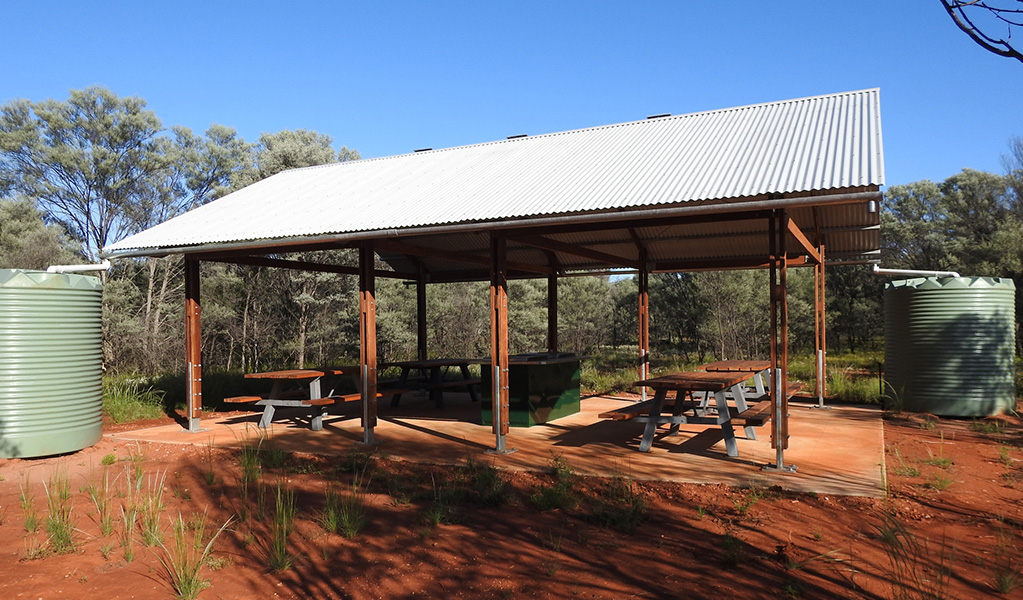Dry Tank campground
Gundabooka National Park
Overview
Stay overnight in Gundabooka National Park at Dry Tank campground. Bring your tent, caravan or trailer to enjoy a night of national park camping near Bourke in outback NSW.
| Number of campsites | 20 |
|---|---|
| Camping type | Tent, Camper trailer site, Caravan site, Camping beside my vehicle |
| Facilities | Picnic tables, barbecue facilities, toilets |
| What to bring | Drinking water, cooking water, firewood |
| Bookings | Book up to 12 people or 2 sites online. |
| Group bookings | This campground is not suitable for group bookings. |
| Please note |
|
Go camping in the NSW outback at Gundabooka National Park’s Dry Tank campground. It's a great place for camping with tents, caravans and camper trailers.
Dry Tank campground makes a terrific base from which to explore the park. Don’t miss the walk through mulga woodlands to nearby Little Mountain. From the mountaintop, you’ll enjoy outstanding views of the Gundabooka Range.
Take a virtual tour of Dry Tank campground captured with Google Street View Trekker.
Also see
Map
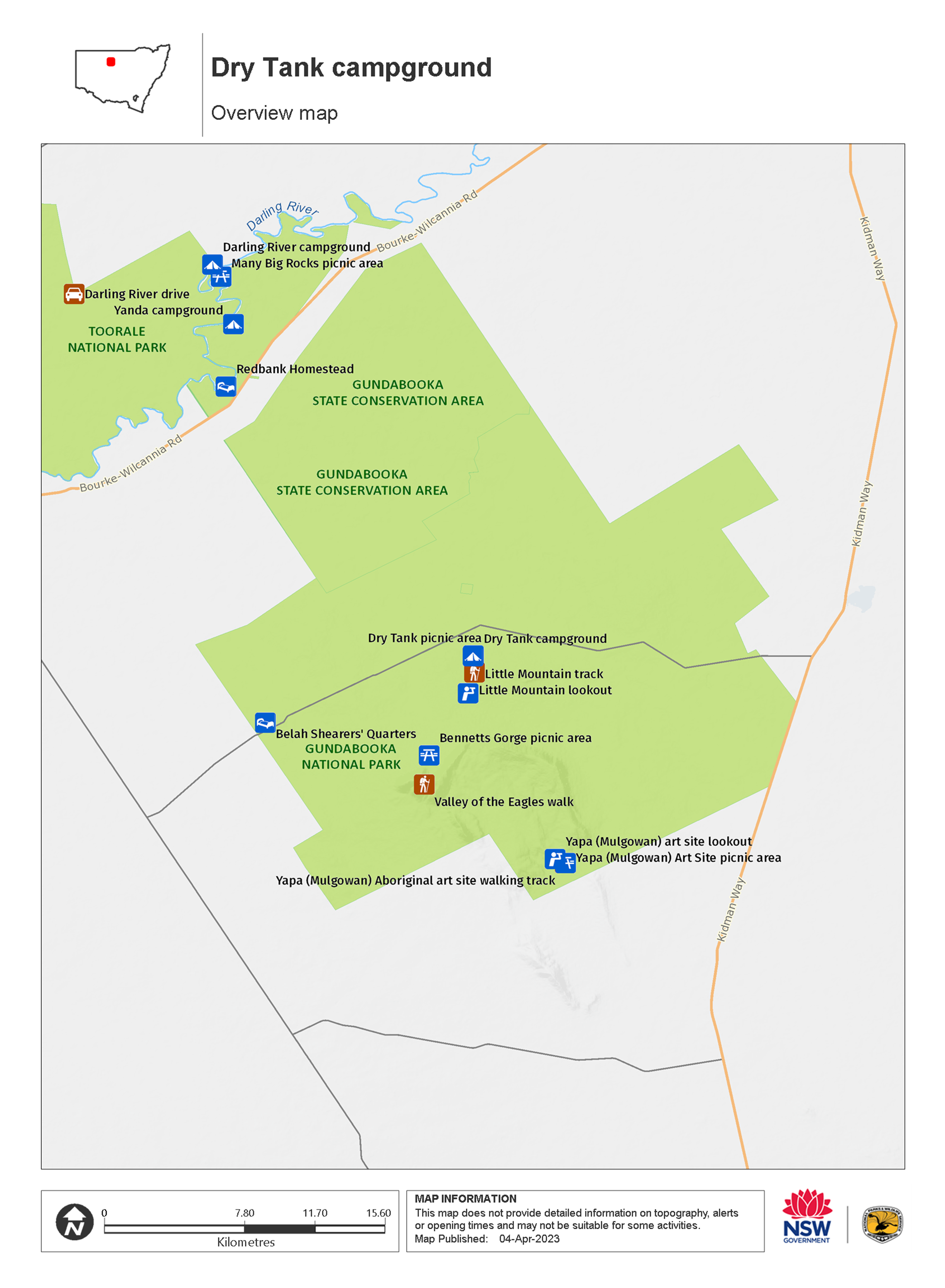
Map legend

Local alerts
For the latest updates on fires, closures and other alerts in this area, see https://uat.nswparks.cloud/camping-and-accommodation/campgrounds/dry-tank-campground/local-alerts
Bookings
- National Parks Contact Centre
- 7am to 7pm daily
- 1300 072 757 (13000 PARKS) for the cost of a local call within Australia excluding mobiles
- parks.info@environment.nsw.gov.au
Operated by
- Bourke office
- Monday to Friday, 8.30am to 4.30pm.
- 02 6830 0200
- npws.bourke@environment.nsw.gov.au
- 51-53 Oxley Street, Bourke NSW 2840
Park info
- in Gundabooka National Park in the Outback NSW region
Gundabooka National Park is always open but may have to close at times due to poor weather or fire danger.
Visitor info
All the practical information you need to know about Dry Tank campground.
Maps and downloads
Learn more
Dry Tank campground is in Gundabooka National Park. Here are just some of the reasons why this park is special:
An emphasis on conservation
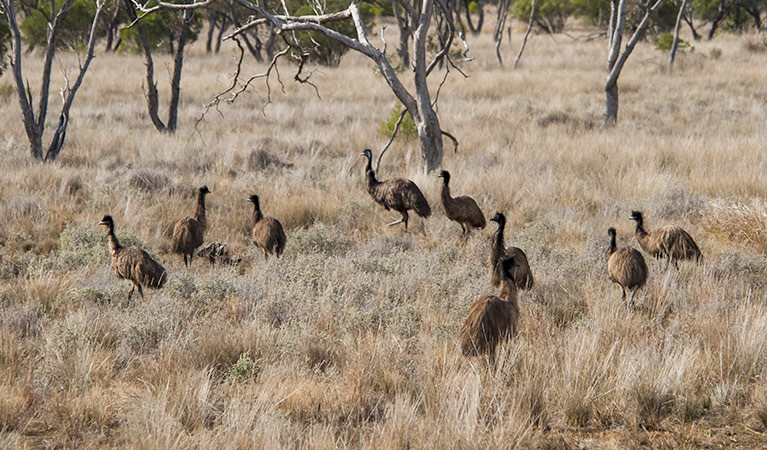
A visit to Gundabooka National Park offers the wonderful opportunity to spot some of Australia's rarest birds and animals. Several threatened species - including the little pied bat, kultarr, pink cockatoo and painted honeyeater - have been recorded in the area. The park also includes 21 different plant communities, including threatened plant species like the curly bark wattle.
- Little Mountain walking track Ideal for outback birdwatching and walking with kids, Little Mountain walking track offers a gentle walk with scenic views of Gundabooka National Park, near Bourke.
An important place
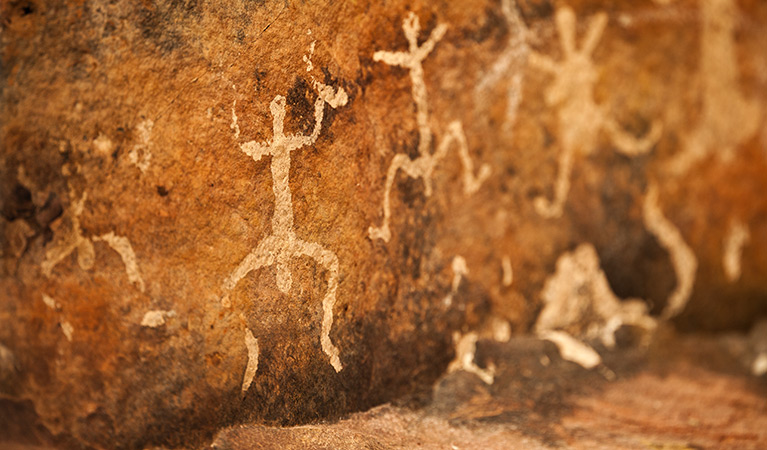
Gunderbooka range is highly significant to the Ngemba and Kurnu Baakandji people of western NSW. Before it became a national park, the area was home to the Ngemba and Kurnu Baakandji people of western NSW. Ceremonial events were held within the range. On your visit, you'll see Aboriginal rock art, with motifs including dancers and animals.
- Yapa (Mulgowan) Aboriginal art site walking track Yapa (Mulgowan) Aboriginal art site walking track offers a unique Outback experience with Aboriginal rock art and birdwatching in Gundabooka National Park, near Bourke.
Pastoral history
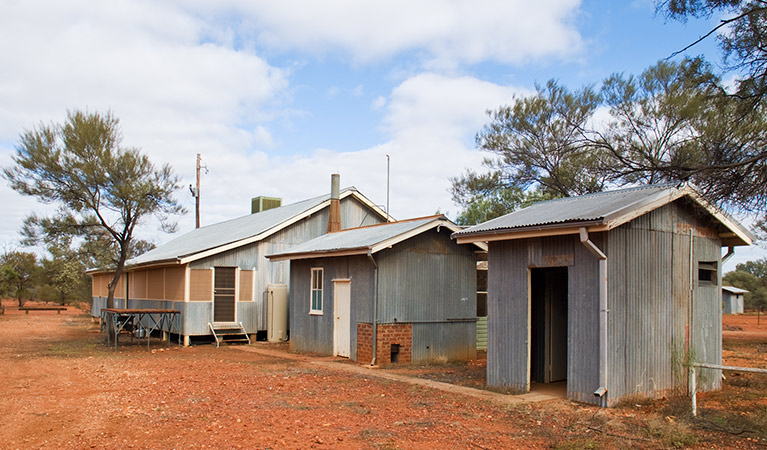
Though noted by Charles Sturt in 1829, the Gunderbooka range wasn't used by pastoralists until the late 1800s. The range was included in neighbouring sheep stations which were then subdivided after World War I. Today, three of these smaller stations - Ben Lomond, Belah and Mulgowan - make up Gundabooka National Park. Check out the old homesteads, quarters, fences, tanks, shearing sheds and yards on your visit.
Rewarding walks
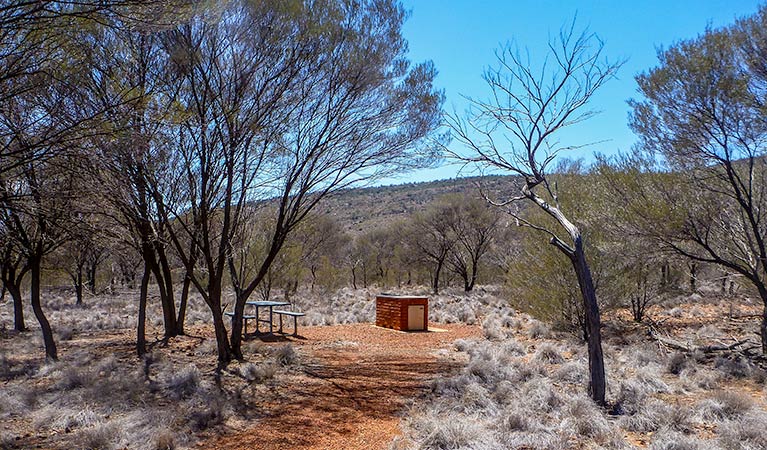
There are a number of opportunities to stretch your legs along one of the well-signed walks in Gundabooka National Park. Take the wonderful Mulareenya Creek Art Site track and see fascinating Aboriginal rock art. Walking the Little Mountain track is also well worth the effort with impressive views awaiting you at the summit.
- Bennetts Gorge picnic area Stop and relax at Bennetts Gorge picnic area when you visit Gundabooka National Park. Enjoy a barbecue or bring a picnic hamper before walking on to Mt Gunderbooka.
- Valley of the Eagles walk Valley of the Eagles walk starts at the popular Bennetts Gorge picnic area and explores the imposing Mount Gunderbooka in Gunabooka National Park.
The beautiful outback
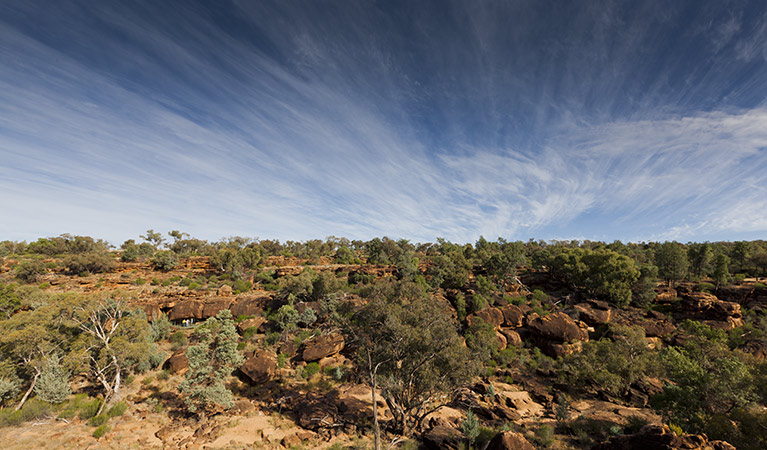
Gundabooka National Park is located in northwest NSW, approximately 50km southwest of Bourke and 110km northwest of Cobar. The 63,903ha national park extends from the Darling river banks to the Gunderbooka range. Vast stretches of grassy woodlands, open plains and rust-coloured rock dominate the landscape.
- Little Mountain walking track Ideal for outback birdwatching and walking with kids, Little Mountain walking track offers a gentle walk with scenic views of Gundabooka National Park, near Bourke.
Plants and animals protected in this park
Animals
-

Emu (Dromaius novaehollandiae)
The largest of Australian birds, the emu stands up to 2m high and is the second largest bird in the world, after the ostrich. Emus live in pairs or family groups. The male emu incubates and rears the young, which will stay with the adult emus for up to 2 years.
-

Wedge-tailed eagle (Aquila audax)
With a wingspan of up to 2.5m, the wedge-tailed eagle is Australia’s largest bird of prey. These Australian animals are found in woodlands across NSW, and have the ability to soar to heights of over 2km. If you’re bird watching, look out for the distinctive diamond-shaped tail of the eagle.
-

Red kangaroo (Macropus rufus)
The red kangaroo is one of the most iconic Australian animals and the largest marsupial in the world. Large males have reddish fur and can reach a height of 2m, while females are considerably smaller and have blue-grey fur. Red kangaroos are herbivores and mainly eat grass.
Plants
-

Mulga (Acacia aneura)
Mulga are hardy Australian native plants found throughout inland Australia. With an unusually long tap root, the mulga is able to withstand long periods of drought.

